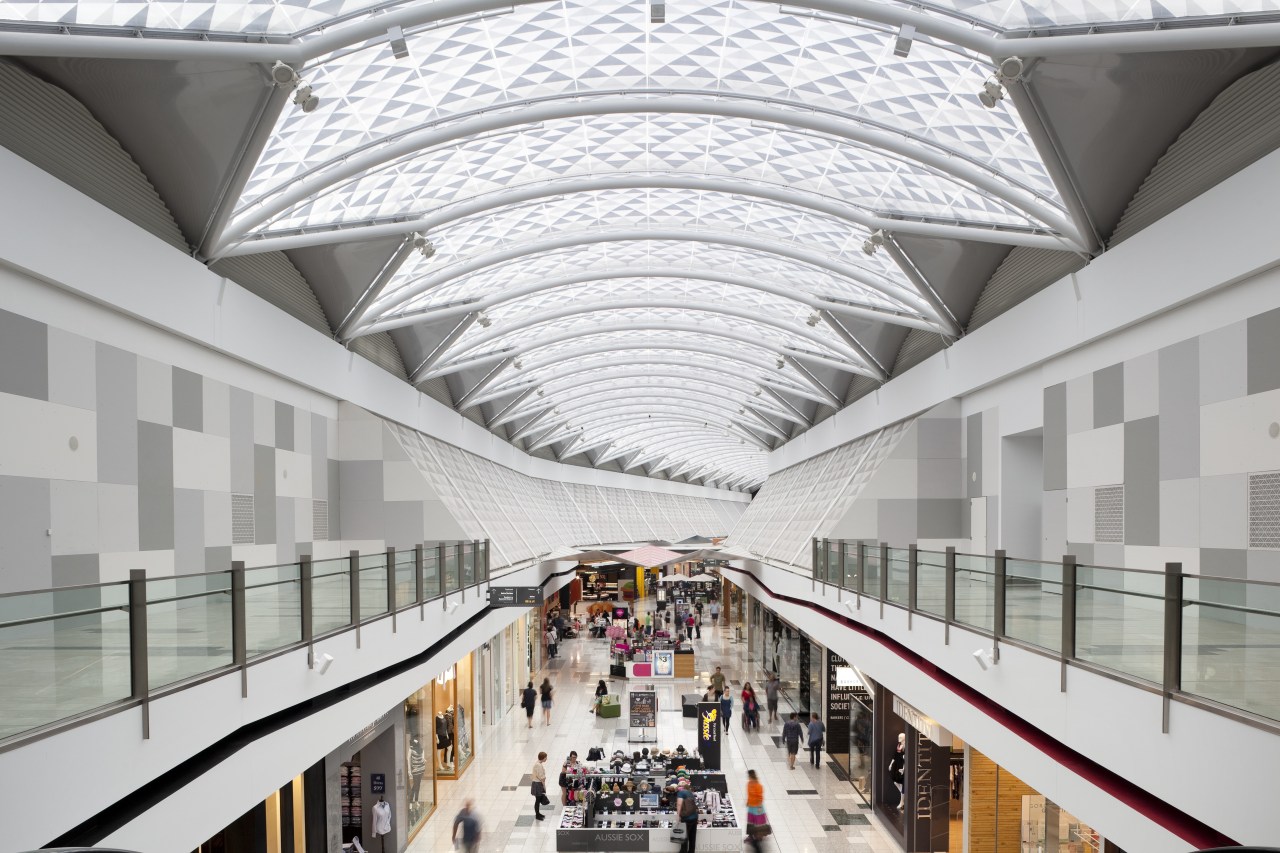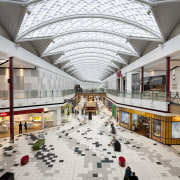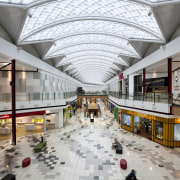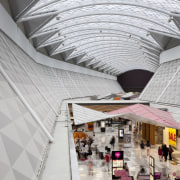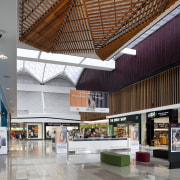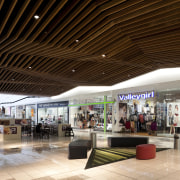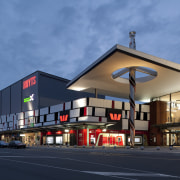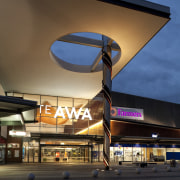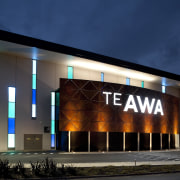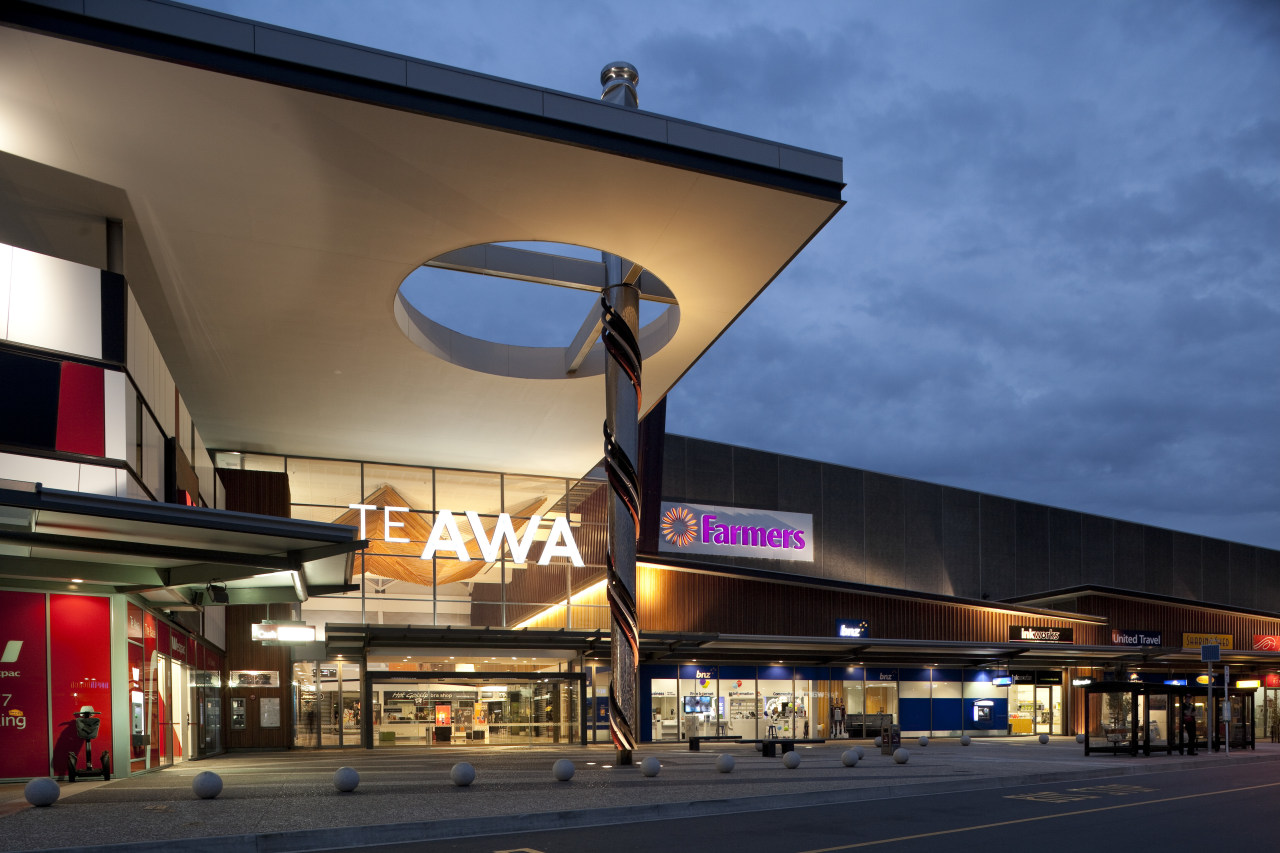Te Awa retail mall reflects local iwi identity
Te Awa Mall at The Base, designed by Ignite Architects
Retail malls are traditionally very internal spaces, closed off from their surroundings and dependent on artificial lighting.
The Te Awa¢ retail mall at The Base¢ in Te Rapa, Hamilton, developed by Tainui Group Holdings and designed by Ignite Architects, turns this idea on its head. Not only designed to maximise natural lighting and ventilation, the mall also moves away from the concept of a mall as a large concrete box.
Mike Pohio, CEO for Tainui Group Holdings, says that right from the outset it was decided the mall extension to The Base would reference the culture of the Waikato-Tainui people and the historical significance of the Waikato River.
"This retail centre needed to offer something quite different," Pohio says. "We believed that a design incorporating cultural influences would not only be good for the Tainui tribe's own aspirations, but also as a point of uniqueness."
Architect Grant Armstrong says this approach determined every aspect of the design, starting with the exterior, which creates a strong visual dialogue with the surrounding region.
"Waikato-Tainui's cultural identity is woven throughout Te Awa. The building itself is reminiscent of a Maori waka, or canoe: the facade facing State Highway 1 incorporates standing seam metal cladding and full-height LED paua feature light strips that reference the hull and paddles (hoe).
"Vertical natural-oiled cedar battens represent the native trees nestled on the banks of the Waikato River and recall the site's history as part of a large wetland riverside forest. The variance in the depth of the battens introduces a human scale and visual warmth that offsets the large mass of the shopping centre."
Armstrong says the pou (carved post) at the main entrance to the centre is the most culturally significant item. As well as being the main entrance point, the pou provides spiritual protection, representing the Maori concept of the Eye of the Needle.
"The convergence of the three threads white, black and red at the eye of the needle is a reference to upholding the faith, laws and charity. But it also represents inclusiveness and the idea that Te Awa is a place where all the community can come together."
Armstrong says collaboration with local iwi was an important part of both the design and construction process. Waikato-Tainui artists and carvers created the pou design concept first as a carved wooden stick (tokotoko). This was scanned and used as a basis for CAD modelling, to create the contemporary laminated timber and stainless steel architectural post that pierces the "eye".
The interior is centred on a winding pedestrian street that represents the Waikato River. Overhead, a suspended feature timber frame echoes the woven pattern of a traditional Maori eel trap (hinaki). Both ends of the mall and the food court have high-level feature bulkhead walls of cedar slats that wrap down and under the soffit to form an undulating ceiling. This references the flow and ripples of the river. The river theme also influenced the selection of agglomerate stone tiling tiles are laid in a pattern that reflects the flows, currents and eddies of moving water. Natural stone river banks and ceramic-timber bridges are included.
"Fibreglass roof finishes and a triple-layer ETFE roof, which allows natural light into the mall, present a crisp, technological representation of the tree canopies at the river's edge," says the architect. "This is the first use of ETFE in a retail setting in New Zealand, and the first use of a triple layer. The frit pattern on the ETFE, which is another symbolic link, helps minimise solar gain while still allowing plenty of natural light to flood the internal street below. The 3500m² ETFE is set between single-span CHS structural steel wishbone ribs, and forms the main organisational spine of the building."
Natural ventilation is provided by a stack-effect system, which pulls spilled air from the tenancies up into a plenum behind the bulkheads. Fans help expel the hot air out through the top of the building, and allow cooler air to enter at the lower level.
Pohio says Te Awa's 29,374m² of net lettable area retail space is already fully leased, and the mall has been future-proofed to allow for additional tenancies on the second level.
Credit list
Client
Project manager
Mechanical engineer
Fire engineer
Landscape architect
Precast concrete
Suspended ceilings and internal partitions
Fall protection systems
Air diffusion products
Architect
Structural engineer
Electrical engineer
Traffic and civil engineer engineer
Main contractor
Aluminium panels
Cavity sliders
Air conditioning plant
Story by: Colleen Hawkes
Home kitchen bathroom commercial design
From farmhouse to farmstead
Walk this way – garden pathways to lead your thinking
Different rooms, same sky-blue ceiling
